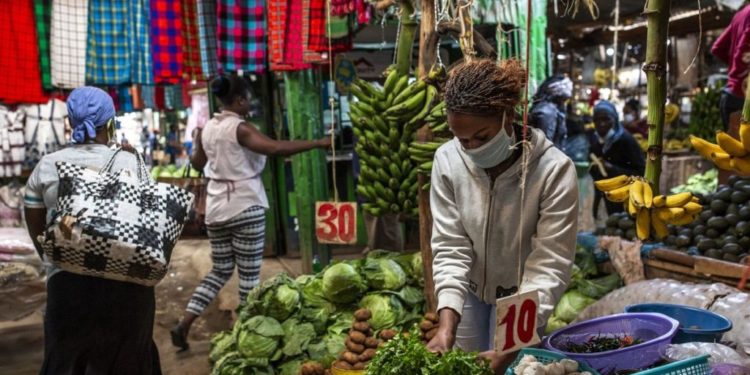Kenya’s annual inflation rate fell to 2.7 per cent in October 2024, marking its lowest level this year, as declining transport costs and moderating food prices helped ease pressure on household budgets.
The latest data from the Kenya National Bureau of Statistics shows a significant decline from September’s rate of 3.6 per cent and represents a sharp decrease from 6.9 per cent recorded in October 2023.
Transport costs declined by 1.3 per cent year-on-year, driven by lower fuel prices. Petrol prices dropped 4.3 per cent month-on-month to KES 181.33 per litre in October, while diesel prices fell 2 per cent to KES 168.82 per litre.
Food inflation, which typically drives overall price growth in East Africa’s largest economy, remained elevated at 4.3 per cent year-on-year, although the rate of increase has moderated. The food and non-alcoholic beverages index rose 0.5 per cent month-on-month in October.
“The price increase was mainly driven by the rise in prices of commodities under Food and Non-Alcoholic Beverages (4.3%); and Housing, Water, Electricity, Gas and other fuels (0.4%) between October 2023 and October 2024,” the statistics office reported.
Some staple foods saw significant price declines compared to last year. Sugar prices fell 31.2 per cent year-on-year to KSh150.33 per kilogram, while sifted maize flour dropped 25.9 per cent to KES 127.87 for a two-kilogram packet.
However, fresh produce prices continued to rise, with carrots increasing 29.8 per cent year-on-year, oranges up 27.1 per cent, and mangoes climbing 21.5 per cent. Beef prices also rose 13.7 per cent compared to October 2023.
Housing costs showed mixed trends. While kerosene prices decreased 26.1 per cent year-on-year, LPG gas prices increased 6.1 per cent. Electricity costs for households consuming 200 kWh dropped 14.3 per cent compared to last year.
The data was collected from a representative sample across 50 zones nationwide during the second and third weeks of October. The survey covers 13 broad categories of household consumption goods and services, with food, housing, and transport accounting for over 57 per cent of the index weights.
The overall Consumer Price Index (CPI) increased marginally from 140.13 in September to 140.44 in October, resulting in a monthly inflation rate of 0.2 per cent.
The latest figures show a steady decline in inflation from the beginning of 2024, when it stood at 6.9 per cent in January. The rate has fallen consistently throughout the year, dropping below 5 per cent in April and continuing its downward trend.
The moderation in inflation comes as welcome news for Kenyan households, who have faced significant cost-of-living pressures in recent years. However, certain sectors continue to experience price increases, with alcoholic beverages showing the highest annual inflation rate among all categories at 7.2 per cent.


















